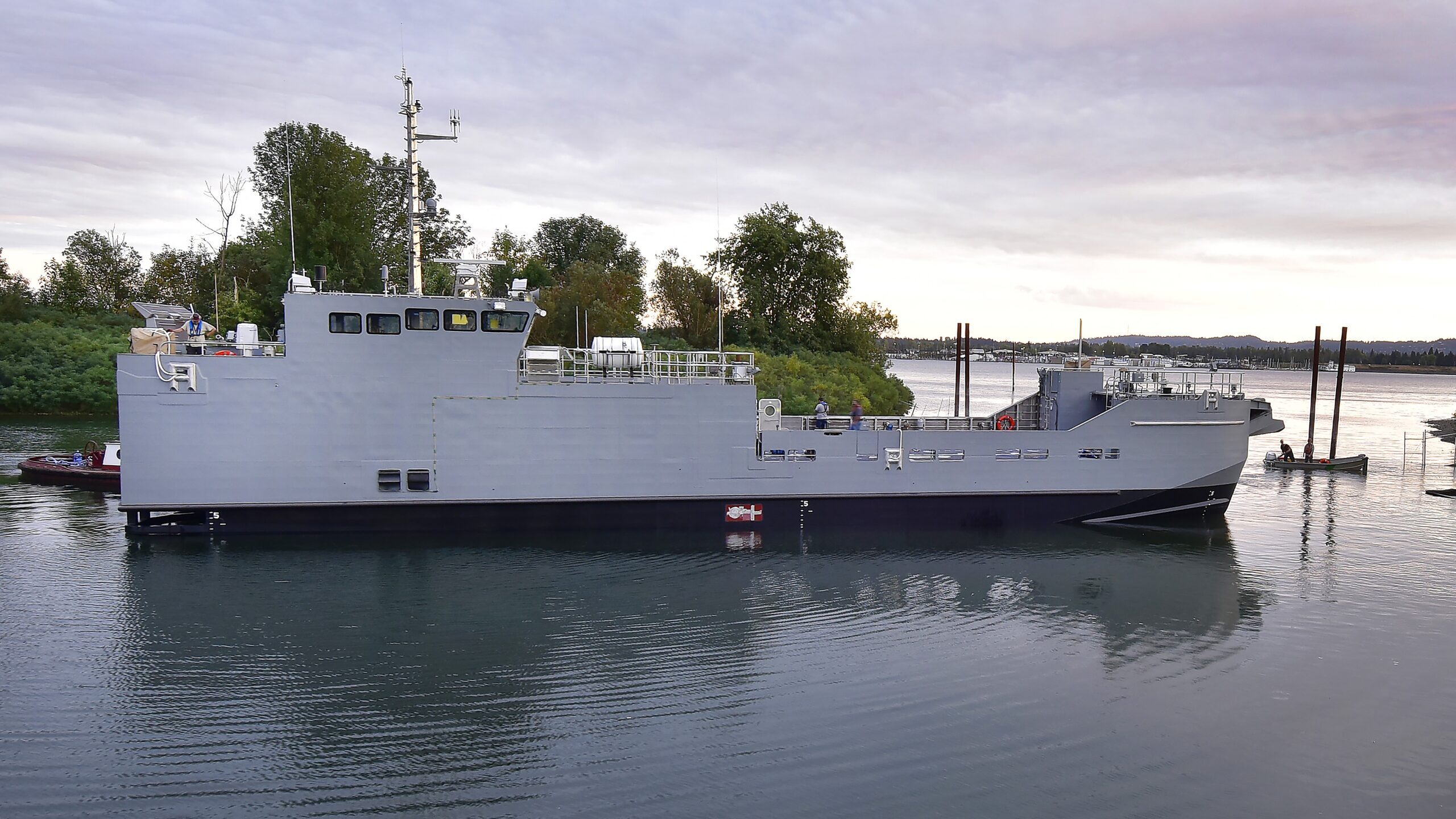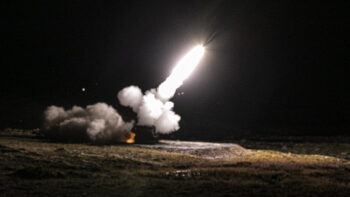
Shown here is the Army’s MSV-L designed to replace the Landing Craft Mechanized-8, (LCM-8). (Vigor LLC photo)
WASHINGTON — Army leaders overseeing the Indo-Pacific region are eagerly awaiting a new small watercraft to ferry troops and equipment to shore, but back at the Pentagon officials are trying to determine just how many they can afford each year, according to one senior official.
“The testing is going well [with the Maneuver Support Vessel-Light], in terms of just performance,” Doug Bush, the head of Army acquisition, told Breaking Defense and another outlet on Oct. 11, during the Association for the United States Army conference. “What we learned was, given the requirements we gave the vendor, it just was going to cost more.”
“You don’t want to see that, but it’s going to happen sometimes, and, in this case, I think we have analyzed it to solidly understand the growth. … It’s really just materials cost more, and labor costs more,” he later added. “I’d call it more of a fact of life cost realism.”
Since 2017 the Army and Oregon firm Vigor Works have been working under a 10-year contract for the MSV-L, and late last year began builder trials with the first one. In the meantime, though, the service decided it needed to rebaseline to program to address vessel requirements and cost growth.
For now, the service is maintaining its requirement for 13 MSV-Ls and the program is in a “much better place” than last year, Bush said.
While he did not detail specifics about performance, the Army wanted a boat “incentivized for speed,” which meant that design changes were necessary to make sure it could withstand the G-forces, Wolfgang Petermann, the project manager for transportation systems within the Program Executive Office for Combat Support & Combat Service Support, said earlier this year.
As for the MSV-L cost, aside from the first one the fiscal 2024 budget request pegged the per-vessel cost in the $31 million to $48 million neighborhood depending on the year and purchase quantity. Those documents also note that the service received procurement dollars for four MSV-Ls in previous years and, at least initially, requested funding for four more in FY24. However, the service then outlines plans to cut that buy to one MSV-L per year in FY25 and FY26, with no procurement funding planned in the subsequent years leaving, the buy at 11 vessels through 2028.
While Bush did not attach a specific dollar figure to growing MSV-L price point, he said that after Vigor provided new cost estimates, the service audited and verified those numbers and now believes the program is affordable. As part of the FY25 budgeting process, he noted that the Army is reassessing its previous procurement plans and the goal is to afford “at least two a year” due to the “high” demand signal coming from leaders in the Indo-Pacific region.
Additionally, there could be some requirements trade off to drive the per unit cost down.
“The first four might be the more expensive ones and the trailing nine would be a little less expensive, if we can take some of the little bit of the requirements off,” he added.
As for leaders clamoring for those new boats, one voice is coming from 8th Theater Sustainment Command’s Maj. Gen. Jered Helwig, who is focused on logistics in the Indo-Pacific region.
Speaking to Breaking Defense last week, Helwig said that if the first MSV-L makes it through trials and final preparation, he could use it for a “couple of opportunities” next year.
“We’ve offered to the Army and acquisition community, ‘Let’s take it out for a test spin in the environment that it will most likely be in,’” the two-star general said.
MSV-L aside, Helwig is also helping the service ink requirements for a larger MSV-Heavy and that is still part of an “iterative” process right now that involves various back and forth between Army entities and industry on the “art of the possible” and refining that want list.
The Army Futures Command’s cross-functional team dedicated to contested logistics is also expected to weigh in with broader insights to service watercraft plans. For example, Bush said they will likely look at the right mix of manned and unmanned boats, and “other ways” to move stuff around on the water.
“We’re still very much in the ‘think about it stage’ on the heavy,” Bush said.























